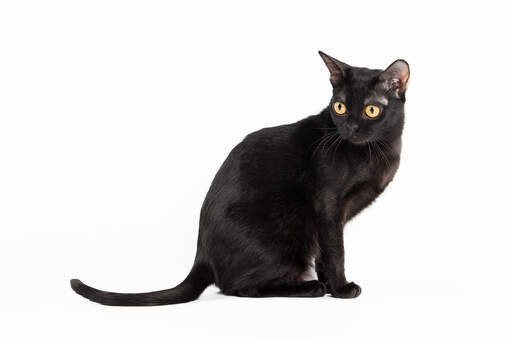Bombay Cats






Breed Rating (1 Reviews)
| Appearance | |
| Friendliness | |
| Hardiness | |
| Garden |
History
In spite of the name, the Bombay is American through and through. In 1958 the US breeder Nikki Horner determined to breed a cat that looked like the black leopard, or panther, of India. It was a long road, with a few dead ends, but in 1965 she hit the jackpot and the Bombay was born.
The cat is basically a Burmese and American Shorthair cross. The resulting black beauty was named by Horner after the Indian city of Bombay.
The breed was developed further in the US by Herb and Suzanne Zwecker. Bombays were officially recognized as a breed in 1970 by the Cat Fanciers Association and in June 1979 the International Cat Association accepted them for championship competition.
Behaviour
The Bombay is highly intelligent, and can be trained to walk on a leash and play fetch. They love the company of their owners, and have a very playful nature, being sociable, inquisitive and utterly charming. They crave company, though, and if left on their own for too long they become depressed.
Varieties
Black only.
Breed Details
- Status: Common
- Place of Origin: USA
- Rough date of Origin: 1950s
- Hair length: Shorthair
- Activity Level: High
- Vocalness: High
- Child friendly: Good with children
- Intelligence:
- Playfullness: Playfull
- Grooming Requirements: Less than once per week
- Weight: 2.5 - 5.0kg
- Size: Medium
- House Cat or Outdoor Cat: Outdoor Cat
- Pet Compatibility:
- Social Needs:
Bombay Pictures



Latest Reviews For Bombay (1 of 1)
Great breed! - Terri,
I have a female Bombay now 8-years old. She is everything the description says about this breed with one exception: She is very friendly with family but not with strangers. She will hide under the covers when company comes or if there are unexpected loud noise such as fireworks or other pops/bangs, etc. She has a 'brother' who is a Great American Red that is literally double her size in weight and height, but they play well together and defend each other if other animals enter their yard. She sleeps on us, loves to play with her toys and wants human interaction all the time. She 'talks' a lot and repeats certain sounds so her humans always know what she wants.











